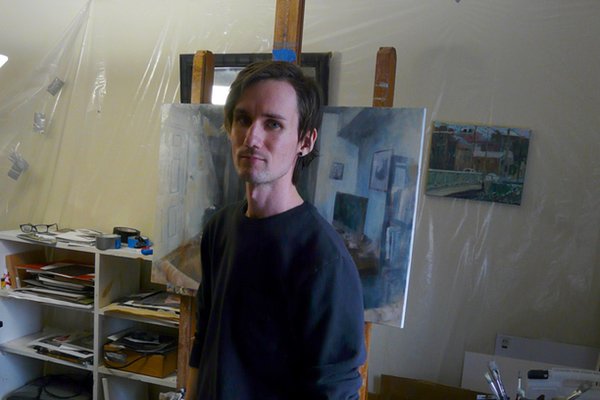Realistic and Impressionistic Portraiture
By Jennifer Nelson, WTP Feature Writer

Dillon Samuelson is a painter and illustrator from Pennsylvania. He graduated from the fine art program at York College of Pennsylvania in 2014, and the following year was awarded the third annual Appell Arts Fellowship at Marketview Arts. His work has been shown in exhibitions across the United States. His award-winning illustrations have appeared in books and comics, accompanying the writing of authors such as Ted Kelsey and Erik Arneson.
Nelson: Your portraits and self portraits are interesting in that your approach to your subjects can vary quite a bit. For instance, how did you come to painting Civil War generals, and in a semi-realistic way?
Samuelson: The officer portraits come from an interest in the US Civil War and the people who were involved. Issues surrounding the war are still relevant today, and I think it’s valuable and fascinating to examine the people who fought in it. The more specific likeness of these paintings comes from a desire to accurately depict the subjects and create a recognizable portrait.
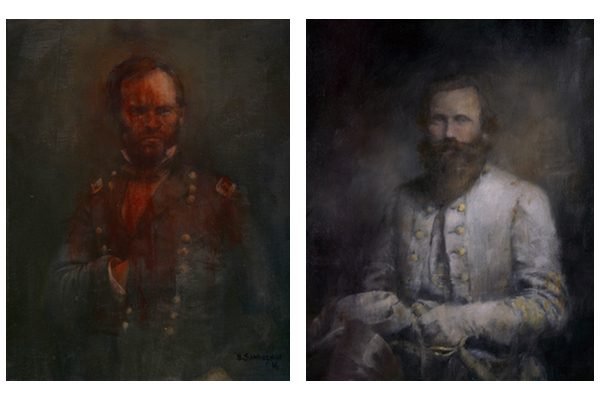
Nelson: Can you speak to your works that are far less realistic, more impressionistic, especially as to “Em” and the self portrait that appear in this month’s WTP?
Samuelson: In these paintings I’m focused more on an impression than a direct likeness; using light, implied movement, or paint application to capture a sense of a person or emotion. I find I can sometimes express a feeling better through the distortion or obstruction of a face than I can with a more true-to-life approach.
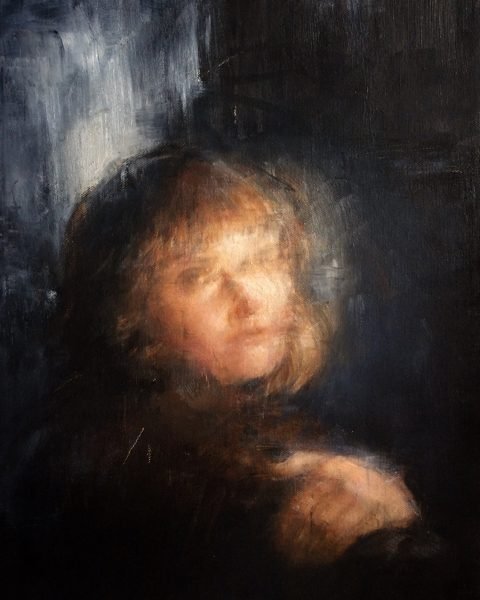
Nelson: What are the advantages and disadvantages of using oil for these paintings?
Samuelson: The slow drying time and blending capabilities, versatile application methods, and luminous qualities are all advantages for me. The slow drying time can also be a disadvantage: I’ve destroyed many paintings due to impatience and going back into things before I should have.
Nelson: You use friends and yourself as models. Can you explain how this helps you paint these individuals in a way that reveals their emotional state, particularly in such paintings as “Devour” and “The Storm (portrait of my father)”?
Samuelson: Familiarity with the subjects is helpful, both in creating a visual likeness and in trying to capture an emotional state. When working from strangers I can project my own ideas onto them, but with people I know I at least have a base of knowledge to start from.
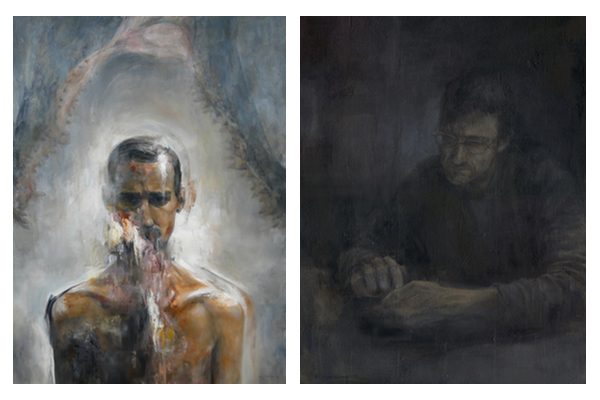
Nelson: You also work in charcoal and even newsprint, as in “Razzle Dazzle” and “Familiarity Breeds Masochism.” What informed these choices as to medium?
Samuelson: My drawings generally take less time than paintings, so the medium choice is informed by a mixture of how I want the piece to look and how long I want to work on it. For the newsprint pieces, I like the layered effect by going back and forth between collage and drawing, as well as the additional element of incorporating headlines from the newspapers.
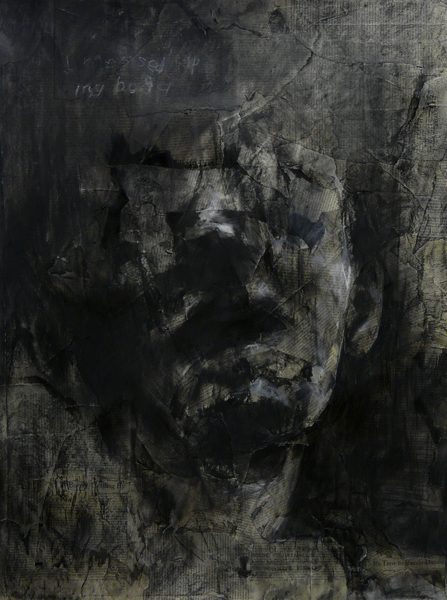
Nelson: What other mediums have you worked in?
Samuelson: I almost always work in two-dimensional mediums: oil painting or charcoal drawing are most frequent, but I also work with watercolor, gouache, acrylic, graphite, pastel, or a mixture of mediums.
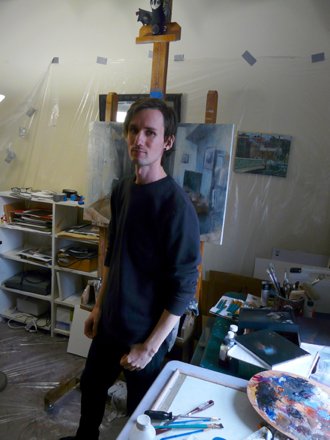
Nelson: You’re a young artist with many accomplishments. When did you first become interested in becoming a painter, and why?
Samuelson: I think my interest in art stems from a love of illustrations and visual storytelling, which started at a young age. I studied illustration in college, but like the freedom of making work for myself and have focused on painting in recent years.
Nelson: What does a typical studio day look like?
Samuelson: I don’t adhere to a specific routine, but when it’s up to me I’ll start my day late and work late into the night. I usually have several things I’m working on at once; I will slowly bounce between projects, listening to music or podcasts while I work.
Nelson: How do you see your artwork evolving in the future?
Samuelson: I’m not sure yet. I don’t have any major changes planned, but see myself continuing with the same type of work and following my interests as they come. Hopefully it keeps getting better, and the evolution will be seen in hindsight.
See Dillon Samuelson’s paintings in The Woven Tale Press Vol. VI #2.
Copyright 2018 Woven Tale Press LLC. All Rights Reserved.

